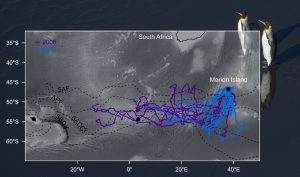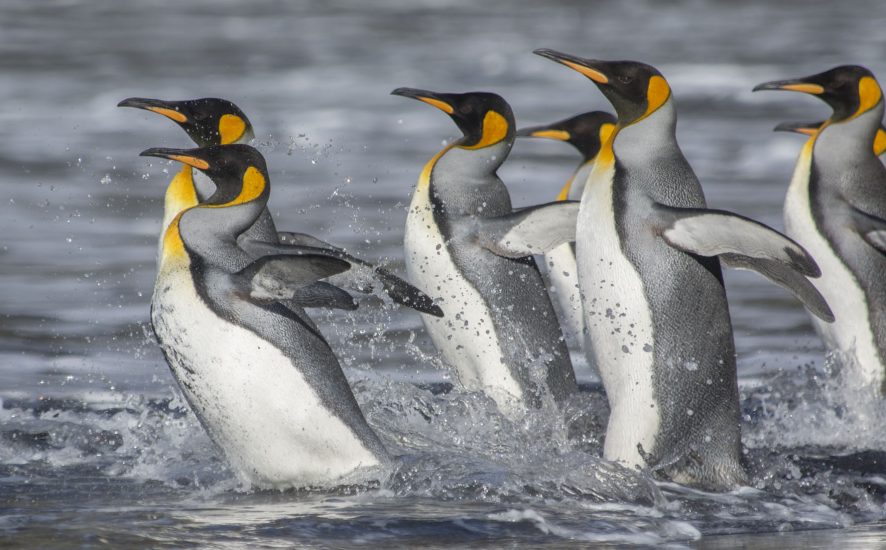Pierre Pistorius (Department of Zoology, Nelson Mandela Metropolitan University, Port Elizabeth, South Africa) and colleagues have published open access in the journal Ecology and Evolution on the at-sea movements of satellite-tracked King Penguins Aptenodytes patagonicus from South Africa’s Marion Island.
The paper’s abstract follows:
“King penguins make up the bulk of avian biomass on a number of sub-Antarctic islands where they have a large functional effect on terrestrial and marine ecosystems. The same applies at Marion Island where a substantial proportion of the world population breeds. In spite of their obvious ecological importance, the at-sea distribution and behavior of this population has until recently remained entirely unknown. In addressing this information deficiency, we deployed satellite-linked tracking instruments on 15 adult king penguins over 2 years, April 2008 and 2013, to study their post-guard foraging distribution and habitat preferences. Uniquely among adult king penguins, individuals by and large headed out against the prevailing Antarctic Circumpolar Current, foraging to the west and southwest of the island. On average, individuals ventured a maximum distance of 1,600 km from the colony, with three individuals foraging close to, or beyond, 3,500 km west of the colony. Birds were mostly foraging south of the Antarctic Polar Front and north of the southern boundary of the Antarctic Circumpolar Current. Habitat preferences were assessed using boosted regression tree models which indicated sea surface temperate, depth, and chorophyll a concentration to be the most important predictors of habitat selection. Interestingly, king penguins rapidly transited the eddy-rich area to the west of Marion Island, associated with the Southwest Indian Ocean Ridge, which has been shown to be important for foraging in other marine top predators. In accordance with this, the king penguins generally avoided areas with high eddy kinetic energy. The results from this first study into the behavioral ecology and at-sea distribution of king penguins at Marion Island contribute to our broader understanding of this species.”

With thanks to Ryan Reisinger for information and illustrations.
Reference:
Pistorius, P., Hindell, M., Crawford, R., Makhado, A., Dyer, B. & Reisinger, R. 2017. At-sea distribution and habitat use in king penguins at sub-Antarctic Marion Island. Ecology and Evolution.
John Cooper, Antarctic Legacy of South Africa, Department of Botany and Zoology, Stellenbosch University, 03 May 2017

